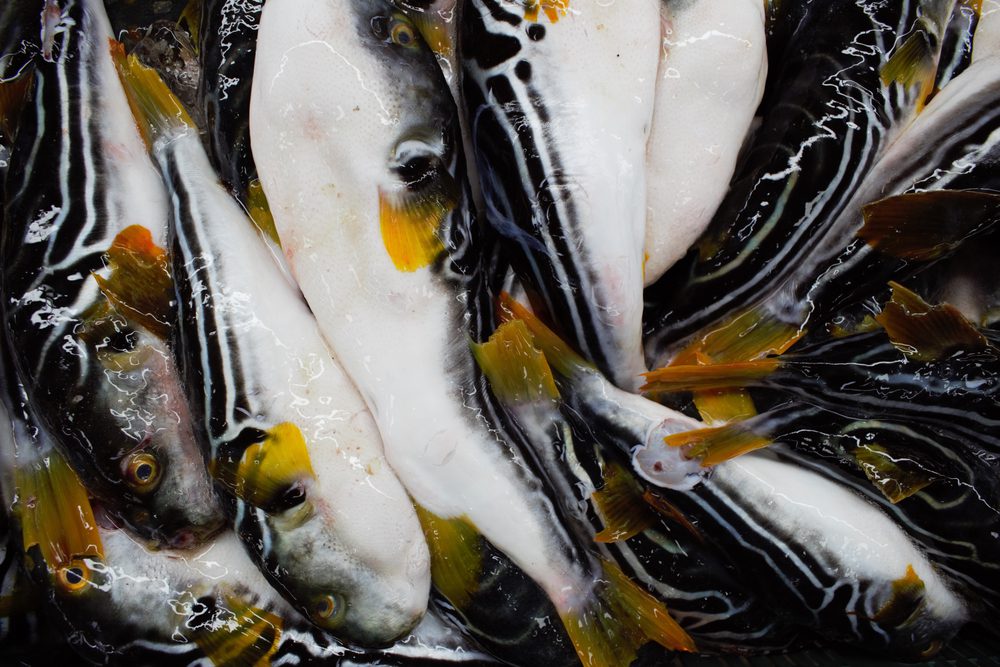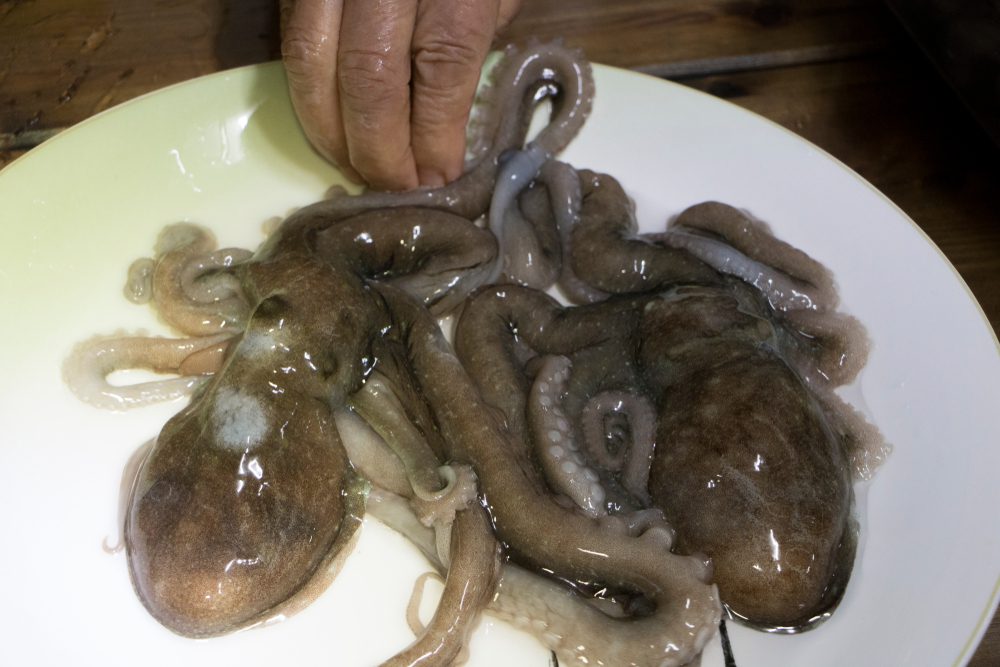
Traveling is all about trying new stuff and experiencing a completely different culture in the country you’ve decided to visit. As you well know, one of the best ways to do this is to eat the foods locals eat. But there’s a difference when you visit Italy and you try a pizza Napoletana from going to Asia and eating bugs.
Literally bugs. Some of those foods might not be to everyone’s taste, and the same goes for what we’re about to show you. These dishes are the most bizarre and weird dishes you could ever hear of, and some of them are actually quite dangerous. Ready? Set, GO:
Top 8 Strangest Food Dishes From Around the World
Birds Nest Soup, China
You probably don’t think that a bird nest would be edible, and we don’t blame you. However, the Chinese use Swifts’ nests to make this weird soup, as the “Caviar of the East”. I know what you’re thinking now, what are these nests made of, right?
Well, you’re gonna “love” this: while you might be thinking that these nests are made of twigs and leaves, in fact, Swiftlets make their nests mostly out of saliva. The thing is, there’s something in the saliva of the bird that gives it a unique rubbery texture. In fact, it’s one of the most expensive animal products ever eaten by humans.
It costs so much because the swiftlets build their nests during breeding seasons, in 35 days. These nests can only be harvested three times a year, and they are typically built in coastal caves collecting them is a very difficult process, which involves nimble climbing skills, hence the hefty price.
As these birds’ nest soups have been highly in demand, manmade nesting sites have become very popular. Hong Kong and the US are the biggest importers of such products. A bowl of soup can cost somewhere between $30 to $100 per bowl, whereas a kilo of nests can go somewhere between $2,000 and $10,000.
The cherry on top is that the soup is believed to have great aphrodisiac qualities, alongside other nutritious protein contents.
Fried Tarantulas, Cambodia
If you’re arachnophobic you probably want to die right now. Honestly, I get you. While I don’t know you, I can tell you for sure there’s one thing you’ll never want to eat, which is one of these eight-legged monsters.
These are not tiny little house spiders, but great big tarantulas, and you can buy and eat them from street vendors in Skuon, Cambodia. They are fried whole, with everything, including legs, fangs, and all. During the bloody, brutal days of the Khmer Rouge rule, starving Cambodians discovered that these creatures are actually edible. But ever since then, they have evolved from vital sustenance to a delicacy tourists come from afar to eat.
If you’re curious to know what they taste like, they’re crispy on the outside, with a gooey inside, and a flavor that resembles crickets or chicken. These black hairy arachnids can be found in the jungle, near the Skuon market, and they have become a great source of fame and fortune for the region.
Imagine that there are BUSLOADS of people that stop just to try these “delicacies” on their way to other places. It costs only a few cents, they taste “delicious” as locals cook them with a bit of garlic and salt.

Pufferfish, Japan
You have to be extra cautious with this dish, otherwise, you might end up in the morgue. This is the deadly Pufferfish, also known as fugu, and it’s the ultimate delicacy in Japan. However, its skin and insides contain this poisonous toxin, tetrodotoxin, which is 1,250 times stronger than cyanide.
While you can eat it in Japan, there are only a couple of expert chefs in licensed restaurants that are allowed to cook it. That’s why it’s super important to try it only at a licensed restaurant, otherwise, you can end up paralyzed, and even die from asphyxiation. Oh, I forgot to mention: there’s no antidote if something happens while eating this Pufferfish.
Fertilized Eggs, The Philippines
This is a Filippino dish called Balut, and while we’re talking about eggs, they’re nothing like a Kinder Surprise. These eggs harbor something you never imagined to be edible, and yet… it might be your only chance to eat the chicken and the egg at the same time.
These fertilized eggs are boiled right before they’re about to hatch, so the yolk oozes out followed by a…chicken fetus. They are cooked when the fetus has anywhere between 17 days to 21 days, depending on what you prefer. ON WHAT YOU PREFER?! Sorry, I just heard myself…Anyway, if the egg is older, the fetus already has beaks, claws, bones, and feathers.
In Filipino culture, these fertilized eggs are just as popular as our hot dogs. If you ever decide to visit The Philippines, you’ll hear street vendors yelling out “Baluuuuuuuuuuuut” as they’re pushing their carts down the street.
They are considered to increase your libido, and they’re also a super healthy snack because they’re full of protein. Balut goes very well with beer, and it is prepared with a pinch of salt, lemon juice, black pepper, and coriander, even if some people prefer it with chili and vinegar. The way to eat this dish is to crack open the egg, sip the broth and then eat the yolk and the fetus.
Maggot Cheese, Sardinia
Did you know that there’s a Sardinian cheese that’s absolutely riddled with insect larvae? It’s called “casu marzu”, also known as “rotten cheese”, but it’s usually referred to as “maggot cheese”. It has been recently banned for health reasons, but it can still be found for sale on the black market in Sardinia and a couple of other parts of Italy.
It’s a sheep’s milk cheese based on Pecorino, which has the larvae of the cheese fly, Piophila casei, in it. As the larvae digest the cheese fats, fermentation starts, and the texture becomes extremely soft with some liquid seeping out.
This cheese should be eaten when the maggots are still alive because when they’re dead, it’s suddenly toxic (what?!). And that’s not even the worst part. Ready? Given the fact that these larvae can easily jump if they’re disturbed, diners need to shield their eyes.
There are a couple of health issues that have arisen about this cheese, some of which include allergic reactions and growing intestinal larvae inside your stomach.
Surstromming, Sweden
Surstromming is a Baltic herring that’s also fermented and can be found on supermarket shelves anywhere in Sweden, even if you probably won’t see it right next to the Ikea meatballs. This type of herring can only be caught in spring when it’s just about to spawn, and then it is fermented in barrels for two months, before being tinned and then again fermented. The cans often bulge during shipping and storage, given the continuous fermentation process.
In fact, there are some airlines that have banned these cans from being taken on flights, because they’re considered to be just as dangerous as fireworks and explosives. When the can is freshly opened, the smell will strike you, as the fermented fish has a strong odor. This surstromming dish is best when eaten with a type of flat crispy bread and boiled potatoes. Sometimes people like to drink milk or water with it, but beer is definitely the best buddy of the dish.

Live Octopus, Korea
Sannakji is a raw dish that’s made out of a live octopus you’ll only find in Korea. This live octopus is cut into pieces, lightly seasoned with sesame oil, and immediately served. This means that you can see tentacles squirming while it’s on your plate.
Eating an octopus that’s still alive is a serious challenge. Beyond the mental challenge of trying to figure out how to eat something that’s still moving, there’s a physical resistance you need to put up while fighting with your food, as the tentacles are trying to stick to any surface they touch.
The first thing you need to do is get the tentacles of your chopsticks, so once the octopus gets in your mouth, it will suction to your teeth, the roof of your mouth, and your tongue, trying to save his life.
Some locals like to call it “a party in their mouth” because the tentacles wriggle while you’re chewing. However, you should be assisted by someone who’s experienced it the first time you try it because if the suction cups stick to your throat, you might choke on them.
Excrement Coffee, Indonesia
We had spiders, larvae, bird saliva…did you think you’d get away without a dish with poop? Don’t worry, this time you won’t have to eat, but drink it. If someone offers you a cup of coffee when you arrive in Indonesia, at least know what to expect.
Kopi Luwak definitely the rarest, and most expensive gourmet coffee in the whole world. And this amazing coffee is made from the excrements of a cat-like creature known as the Luwak. This animal eats only the ripest coffee cherries, but its stomach is unable to digest them, so they come out whole.
The coffee that results is considered to be the best coffee ever, as the stomach acids and enzymes that perform the fermentation process give the coffee a special aroma. The process is only made on the islands of Sumatra, Java, and Sulawesi in the Indonesian Archipelago.
It costs somewhere between $120 to $300 per pound, so if you want to taste you, you should start saving now!
If you enjoyed reading this article, we also recommend reading: 14 Weird Things Only Florida Residents Are Doing











